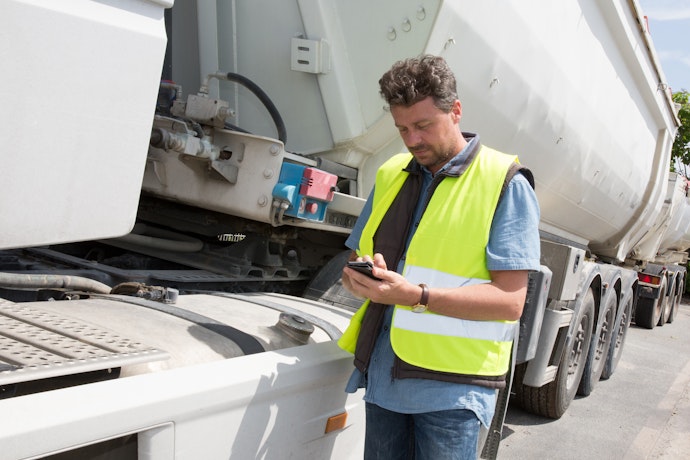How smart video fuels smart business
Learn how innovations in video powered by AI and machine learning are helping to reshape safety and efficiency for businesses.
Read more
The trucking industry has jolted to attention in recent years by various technological innovations that enabled major players in adjacent industries to make their play. Ridesharing, for example, was one area where leveraging artificial intelligence (AI) and machine learning logistics enabled some major names to cause a panic.
Suddenly, autonomous vehicles, AI, machine learning, and other buzzwords flooded the media, leading trucking businesses to wonder if their livelihoods were at risk. Much to their relief, the most recent attempts did not pan out, but the potential consequences raised deeper questions about how AI in transportation would move the trucking industry in years to come.
In an industry notoriously resistant to change (see "ELD"), owners and operators are left with many unanswered questions about the sustainability of their businesses and how they can remain viable.
Though many speculate we have a while yet before autonomous trucks make any sort of major impact on trucking, AI and machine learning are already impacting transportation today. We’re taking a closer look at how artificial intelligence is already impacting trucking today and how owners and operators can prepare their fleets for the future.
Owners aren’t the only ones worried about the prospect of large technology companies entering the commercial trucking industry and crippling their chances at being competitive. Major changes in the transportation industry due to AI are already happening and in regular practice, although they might be more subtle than self-driving vehicles.
The reality is that driverless vehicles aren’t the only use for AI in transportation. For instance, it wasn’t long ago that owners only had a vague insight to interpret critical events reported from telematics monitoring systems. Today, video solutions offer the ability to gain the context necessary to understand the actual circumstances around a harsh driving event, previously limited to the interpretation of numerical data. In fact, progressive analysis skills made possible by machine learning continuously improve the accuracy of the automated classification event severity, and managers are notified only when an event requires review.
This means that business leaders have the ability to broaden visibility and deepen their knowledge of what goes on with their fleet without adding to their burden by requiring a person sift through data (or hours of footage, in this case).
Statistical analysis of driver behavior and operational efficiency data is as much an art as it is a science. With so many variables to consider, including human and machine elements, refining the way owners and operators manage their people, as well as their equipment, in real time, is imperative. Understanding the context of unsafe driving behaviors and having the opportunity to engage the problem directly with a driver to course correct before infractions mount up, or accidents happen, is a major benefit of AI- and machine learning-enabled video in transportation.
In addition to reducing the likelihood of accidents, businesses can further mitigate risk by reducing false liability claims. Oftentimes, businesses avoid major lawsuits and damage to their reputations by paying out when accused of fault in an accident. Without the ability to back up a driver's account, owners are left with few options. Video solutions offer the ability to provide evidence as businesses back up their drivers, enhancing the trust relationship between owners and employees as well as between the business and customers (not to mention prospective customers).
With consumers expecting same-day delivery and updates en route, the new normal in transportation is over-communication, transparency, and complete visibility, and all signs point to advances in AI and its impact on all industries continuing to grow. The International Data Corporation (IDC) that worldwide spending on cognitive and artificial intelligence systems to reach $57.6 billion dollars by 2021.
Customers and their expectations of what constitutes “above and beyond” service are evolving as quickly as the technology that plays an integral part in day-to-day workflows. To offer excellent customer service, businesses must evolve as quickly as the definition of that term.
AI and machine learning are already making businesses smarter and trucking more efficient, helping businesses cushion their bottom line and proactively avoid liability and risk challenges rather than simply reacting to incidents that could otherwise have been avoided.
Companies just now considering how to begin their digital transformation are already behind the curve. As technology like AI continues to become more a part of the industry, even before major changes like autonomous vehicles become a reality, businesses that adopt innovations now will have a much easier time keeping up with the best-in-class competitors.
1 http://fortune.com/2017/03/27/uber-otto-artificial-intelligence-truck-driving/
Tags: Cost control, Customer Service, Dispatching & Scheduling, Fleet utilization, Fuel cost management, Productivity & Efficiency, Revenue & ROI, Safety, Team Management, Vehicle & asset security, Vehicle Maintenance




Find out how our platform gives you the visibility you need to get more done.
Learn how innovations in video powered by AI and machine learning are helping to reshape safety and efficiency for businesses.
Read moreAre you ready for vehicle tracking? Go through our checklist to learn the signs you’re ready to add fleet tracking to...
Read moreLearn how AI, machine learning, and predictive analytics is improving fleet accurating and cutting costs.
Read moreLearn how telematics can lead to operational improvements.
Read more